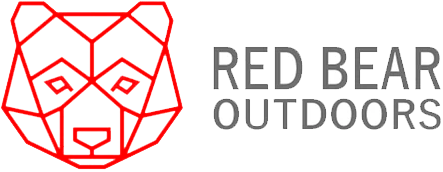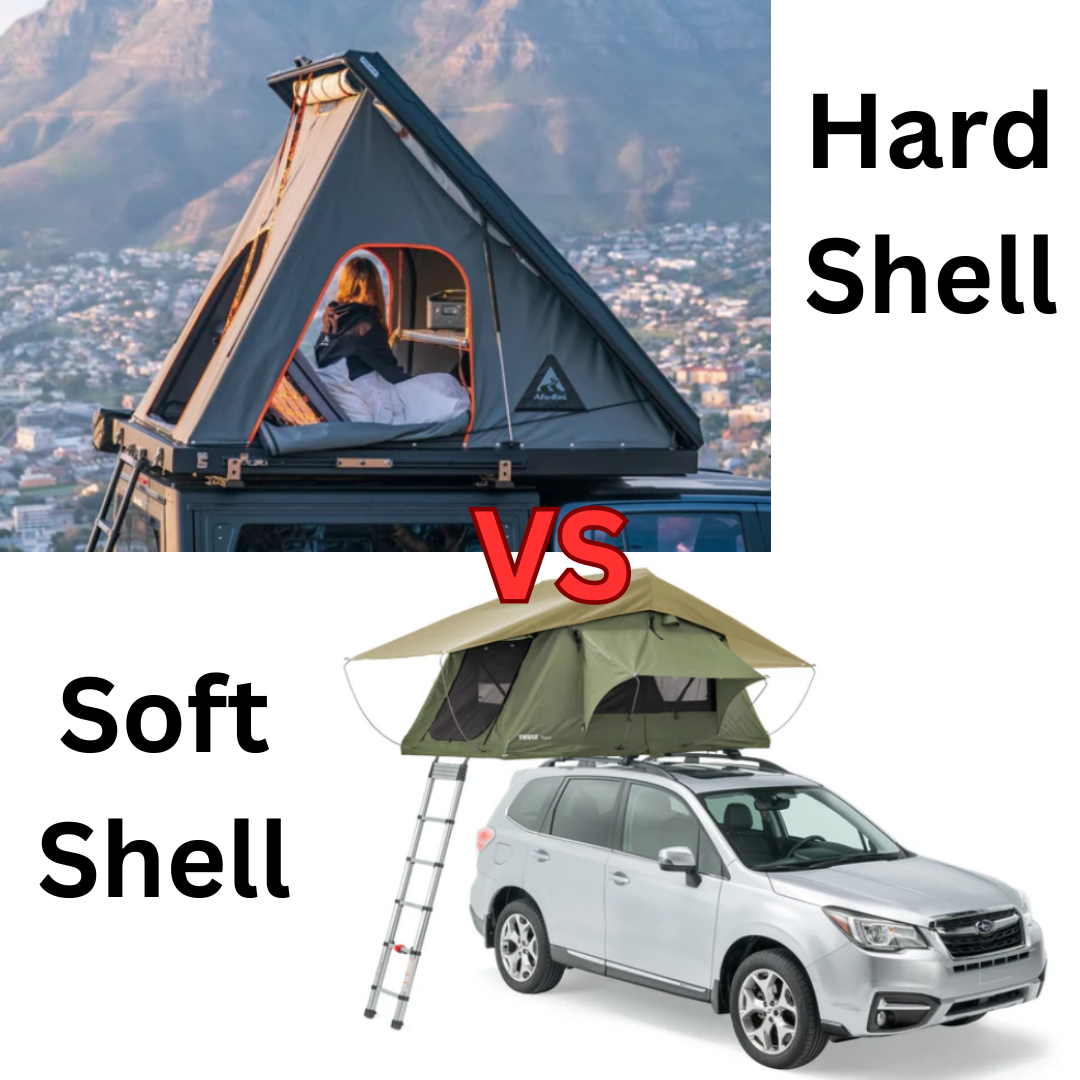Should I get a hard shell or soft shell roof top tent? What are the pros and cons of each? Which one is best for me? We'll take a stab at breaking down the key differences to help you make the decision.

Hardshells
Outer Material - Hardshell roof top tents typically have two outer shells and a fabric that joins the shells. As the shells are made of fibreglass or aluminum, they are extremely durable and will have a longer life span than softshells. Between the two materials, fibreglass tents are usually a bit lighter.
Hardshells are also better against the elements as the outer shell is completely water resistant and better at blocking wind.
Weight - Hardshell tents are typically slimmer and more aerodynamic than softshell tents. This means they create less wind resistance when driving. However, the hard exterior shells are heavier than soft shells materials which means you might end up spending more on gas. That being said, the weight of roof top tents vary largely based their capacity (e.g. a 4 person tent will be heavier than a 2 person tent)
Shape - Wedge vs Box -
Wedge shaped tents will have a hinge at one end and need to be unfolded. With fewer moving parts, the wedge shape has less risk that the inner frame will have any problems. However, because of its shape, only one side will have the height - and you'll typically place your feet on the side with the hinge.
Box shaped tents take slightly longer to open and come with an electric motor or hand-crank mechanism that raises or lowers the upper shell. They can also come with gas struts that allow a really fast open, but then are a little more challenging to close as you need to apply force to get them down and strapped. The box design offers greater comfort with a consistent headspace.
Neither shape is "better" but really a matter of preference.
| Pros | Cons |
| Durable | Expensive |
| Stronger | Heavier |
| More Aerodynamic | Less Customization |
| Easier Open/Close |
Entry-Grade Softshells
While Red Bear doesn't carry many entry level softshells (we define as those roughly between $900 to $1500 CAD), we wanted to discuss them here.
Materials & Build - an entry-level tent doesn't necessarily mean bad quality but there are a few things to look for:
- External rainfly that's 100% waterproof and at least 420D poly-cotton ripstop fabric. The thickness is needed to withstand rain, wind, low temperatures
- Internal tent fabric (canvas) - should still be water-resistant, often polyester or < 260g polycotton
- Aluminum build - base cap, inner frame poles, ladder
- Foam mattress - at least 2" thick
- Mosquito nets - needed to keep out those bugs
- Watch out for bad quality zippers - that quickly becomes frustrating and can lead to you having a ratchet-strapped travel cover on the highway
Entry level tents will lack many other different features, accessories or gadgets such as honeycomb aluminum bases, thicker canvas walls and rainflies, boot bags, or annexes.
Capacity - entry-level tents are enough for 2 (max 3) people to have a good nights sleep. To stay comfortable with 3+ people inside, the quality of material and ventilation become more important.
Another factor to keep in mind is frequency of usage, if you expect to be out every weekend, the wear and tear on entry-level tents will quickly make an impact.
| Pros | Cons |
| Afforable | Not for Families |
| Lightweight | Less Durable |
| Ideal for Newcomers | Not 4-Season |
| Limited Features |
Mid-Grade Softshells

Mid-level softshell tents are slightly more expensive and typically start around $2,000 CAD. These tents begin to introduce additional features and accessories, as well some improvements in materials.
Materials & Build - a mid-level tent should come with improved materials and a more quality build. Look for:
- Thicker canopy materials - 600D ripstop + 260g polycotton
- Base - honeycomb plastic interior with aluminum cap
- Seams - double stitched or heat sealed
- Frame - 0.5" aluminum poles
- Mattress - 2.5"+ thickness
- Nets - No-see-um mesh
- Comforts - Ladder overhangs and annexes
Capacity - Mid-grade tents are great for 2 to 3 people. Again, as with entry-level tents consider the frequency of your usage and how you will be using your tents. Mid-grades are still targeted towards less-rough camping and infrequent usage.
Weight - These tents will usually hover around the 135 to 165 lbs mark and can approach capacity for some crossbars/rails. Keep in mind an annex is an extra 30 lbs on your roof, so consider your racks accordingly.
Extra Features - Creature comforts like ladder overhangs and annexes start to make an impact. These will help make your stay more pleasant (and dry!), so keep an eye out on what the tent comes with.
| Pros | Cons |
| Better Quality | Price Increases |
| 3 to 4-Season Tents | Weight Close to Capacity of Crossbars / Rails |
| Extra Features Like Annexes |
Expedition-Grade Softshells

Expedition-Grade softshell tents are more expensive and typically start around $3,000 CAD. That being said, the materials are MUCH better.
It's the attention to detail in the construction that makes all the difference - thicker and more reliable fabric, excellent sewn and sealed seams, honeycomb aluminum bases.
Materials & Build - an expedition-level tent should be constructed with better materials. Look for:
- Thicker canopy materials - 600D ripstop and 360g+ polycotton
- Base - heavy-duty honeycomb aluminum with aluminum or steel caps
- Seams - hand sewn or manually checked
- Frame - 0.75"+ aluminum or steel poles
- Mattress - 3"+ thickness, anti-condensation mat
Capacity - Expedition grade tents are for those looking for more space and comfort. The higher level soft shells typically support 3-4 persons with some reaching as far as 5.
Weight - One thing to watch out for is that with better materials and larger capacity, they also tend to get a lot heavier. Excluding annexes that become a commonly included feature, expedition grade tents start weighing at 165 lbs and quickly go up from there. Depending on the weight, it is often recommended at this point to switch to a full roof rack platform like the Front Runner Slimline. Always double check your roof rack and car roof weight ratings.
Extra Features - Beyond better materials, you'll find a wide range of additional features such as skylight windows, annexes for extra space, shoe bags, LED lighting and other little things to make your camping experience that much more enjoyable.
| Pros | Cons |
| High Quality | Expensive |
| Spacious | Heavy |
| 4-Season Tents | |
| Extra Features |
As always, if you have any questions or want a second opinion, feel free to reach out to us through our Contact Us form, or via email at info@redbearoutdoors.ca.

